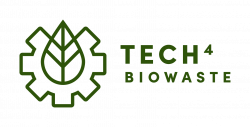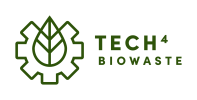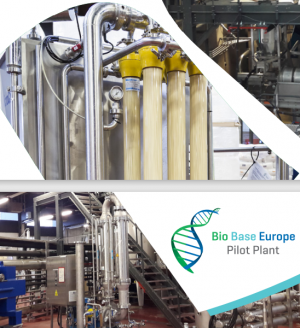Membrane filtration
| Technology | |

| |
| Technology details | |
| Name: | Membrane filtration |
| Category: | Pre-processing (Separation technologies), Post-processing (Separation technologies) |
| Feedstock: | All materials |
| Product: | Separated products |
Membrane filtration is a separation technology to remove substances from liquids and gases with the help of permeable membranes which are composed of fibrous or porous materials.
Feedstock
Origin and composition
In membrane separation processes, the membrane acts as a selective barrier between two phases with the ability to facilitate or limit the transport of one or more components from one phase to another by the action of a driving force. This driving force can be pressure, concentration, electrical potential, or temperature gradient. The stream passing through the membrane is the permeate, whereas the stream containing the rejected components is the retentate. The most common applications in biotechnology are the separation of solid biomass from feedstocks, separation of production cells within a pre-treatment or a downstream process and separation of target dissolved substances from liquid streams.
Pre-treatment
For membrane filtration, no specific pre-treatment is needed since it is used to separate different fractions within a process chain. Sometimes, it is combined with other separation technologies, such as centrifugation.
Process and technologies
Membrane separation processes differ based on driving force and size of the separated particles.
Different driving forces
Pressure driven processes include microfiltration, ultrafiltration, nanofiltration and reverse osmosis. Other driving forces such as electrical potential, concentration gradient or vapor/pressure gradient include electrolysis, dialysis, electrodialysis, gas separation, vapor permeation, pervaporation, membrane distillation, and membrane contactors. All processes except for pervaporation involve no phase change. Microfiltration and ultrafiltration is widely used in food and beverage processing, biotechnological applications and pharmaceutical industry, water purification and wastewater treatment, the microelectronics industry, and others. Nanofiltration and reverse osmosis membranes are mainly used for water purification purposes.
Operation modes
Membrane filtration can be carried out by means of two operating modes: dead-end filtration and cross-flow filtration.
Dead-end filtration
In dead-end filtration, the feed stream flows perpendicular to the membrane and is forced through the membrane. In consequence, the retained components accumulate on the membrane surface forming a cake layer, resulting in a decrease of the filtration rate due to the additional resistance to filtration of this cake layer. Dead-end operation mode is mostly employed in MF and is commonly used for separation of solid biomass from different feedstocks within pre-treatment processes.
Cross-flow filtration
In cross-flow filtration (CFF), the feed flows parallel to the membrane surface. The tangential flow allows the accumulated rejected solutes on the surface of the membrane to be entrained, limiting the thickness of the cake layer and helping to maintain the permeate flow. CFF is widely used for concentration, purification or fractionation of target compounds from liquid streams.
Membrane modules
The membrane module is also a key parameter in the performance of a membrane separation process. The modules are designed with the objective of increasing turbulence on the surface of the membrane to reduce the mass transfer resistance and the concentration effects. The most used modules are plate and frame, spiral, tubular and hollow fibres.
Products
The products of a membrane filtration are the compounds retained by the membrane and the permeate stream that can both be further processed.
Post-treatment
The post-treatment of the filtrate or retentate is depending on the next steps within the production chain.
Technology providers
| Company name | Country | Technology subcategory | Technology name | TRL | Capacity [kg/h] | Molecular cut-off [kDa] | Feedstock: Food waste | Feedstock: Garden & park waste |
|---|---|---|---|---|---|---|---|---|
| Filtertechnik Jäger GmbH | Germany | Cross-flow filtration | High-Flow Filtergehäuse CPB-12-60-DN250-316Ti-10 | 9 | 700000 | - | ● | ● |
| Hysytech S.R.L. | Italy | - | Membrane separation system | 7 | - | >5 | ● | ● |
| SiccaDania | Denmark | Cross-flow filtration and reverse osmosis | Membrane Filtration Systems | 9 | - | 0.1-200 | ● |
Filtertechnik Jäger GmbH
| General information | |||
| Company: | Filtertechnik Jäger GmbH | 
| |
| Country: | Germany | ||
| Contact: | info@filtertechnik-jaeger.de | ||
| Webpage: | https://www.filtertechnik-jaeger.de | ||
| Technology and process details | |||
| Technology name: | High-Flow Filtergehäuse CPB-12-60-DN250-316Ti-10 | Technology category: | Pre-processing (Separation technologies), Post-processing (Separation technologies) |
| TRL: | 9 | Capacity: | Up to 700,000 kg·h-1 |
| Filter material: | PP, upon inquiry also PE | Hydrophobicity: | |
| Molecular cut-off: | kDa | pH: | |
| Pore size: | N-Series: 1-125 µm | Pressure: | Up to 10 bar |
| Processable volume: | Continuous: 1,187 L | Surface area: | Up to 135 m2 |
| Temperature: | Up to 100 °C | Other: | ATEX classicifcation: EX II GT3 |
| Feedstock and product details | |||
| Feedstock: | Wide range of suspensions (solids in liquids) | Product: | Filtered liquid and/or separeted solids |
Filtertechnik Jäger has been fully dedicated to filtration technology for 3 decades now. The company was founded in 1995 and is now a German family business with 25 employees. As a German manufacturer and competent partner to the industry, we serve our customers with high-quality and innovative products as well as valuable expertise and technically courteous service.
Hysytech S.R.L.
| General information | |||
| Company: | Hysytech Srl | 
| |
| Country: | Italy | ||
| Contact: | massimiliano.antonini@hysytech.com; simone.solaro@hysytech.com; freddy.liendo@hysytech.com | ||
| Webpage: | www.hysytech.com | ||
| Technology and process details | |||
| Technology name: | Membrane separation system | Technology category: | Pre-processing (Separation technologies), Post-processing (Separation technologies) |
| TRL: | 7 | Capacity: | Not Provided kg·h-1 |
| Filter material: | Ceramic/polymeric materials | Hydrophobicity: | Not Provided |
| Molecular cut-off: | down to 5 kDa | pH: | 7-14 |
| Pore size: | 100 µm | Pressure: | up to 8 bar |
| Processable volume: | 250 L | Surface area: | 10/10 m2 |
| Temperature: | up to 80 °C | Other: | 2 step filtration: Microfiltration and Ultrafiltration |
| Feedstock and product details | |||
| Feedstock: | High pH bioproduct solution | Product: | Low pH bioproduct and lower water content |
SiccaDania
| General information | |||
| Company: | SiccaDania Group | 
| |
| Country: | Denmark | ||
| Contact: | info@siccadania.com | ||
| Webpage: | https://siccadania.com | ||
| Technology and process details | |||
| Technology name: | Membrane Filtration Systems (Reverse Osmosis, Nanofiltration, Ultrafiltration, Microfiltration) | Technology category: | Pre-processing (Separation technologies), Post-processing (Separation technologies) |
| TRL: | 9 | Capacity: | kg·h-1 |
| Filter material: | Ceramic or polymeric (Microfiltration, Ultrafiltration), Polymeric (Nanofiltration, Reverse Osmosis) | Hydrophobicity: | |
| Molecular cut-off: | 0.1-200 kDa | pH: | |
| Pore size: | Up to 5 µm | Pressure: | bar |
| Processable volume: | L | Surface area: | m2 |
| Temperature: | °C | Other: | |
| Feedstock and product details | |||
| Feedstock: | Varios applications for dairy and food | Product: | Various revovered products separated by their physicochemical properties |
The company was founded in 2014 focussing on creating a worldwide company with offices in France, Germany, The Netherlands, Poland, Singapore, China, Brazil and Canada. A wide product portfolio is offered including dryers, evaporators, fans & blowers, membrane filtration plants, mixers, powder handling machinery & separators, rotary vacuum filters, screw conveyors, as well as starch processing & recovery plants.
Open access pilot and demo facility providers
Membrane filtration: Pilots4U Database
Particle filtration: Pilots4U Database
Patents
Currently no patents have been identified.
References and further readings
- Membrane filtration in Wikipedia



